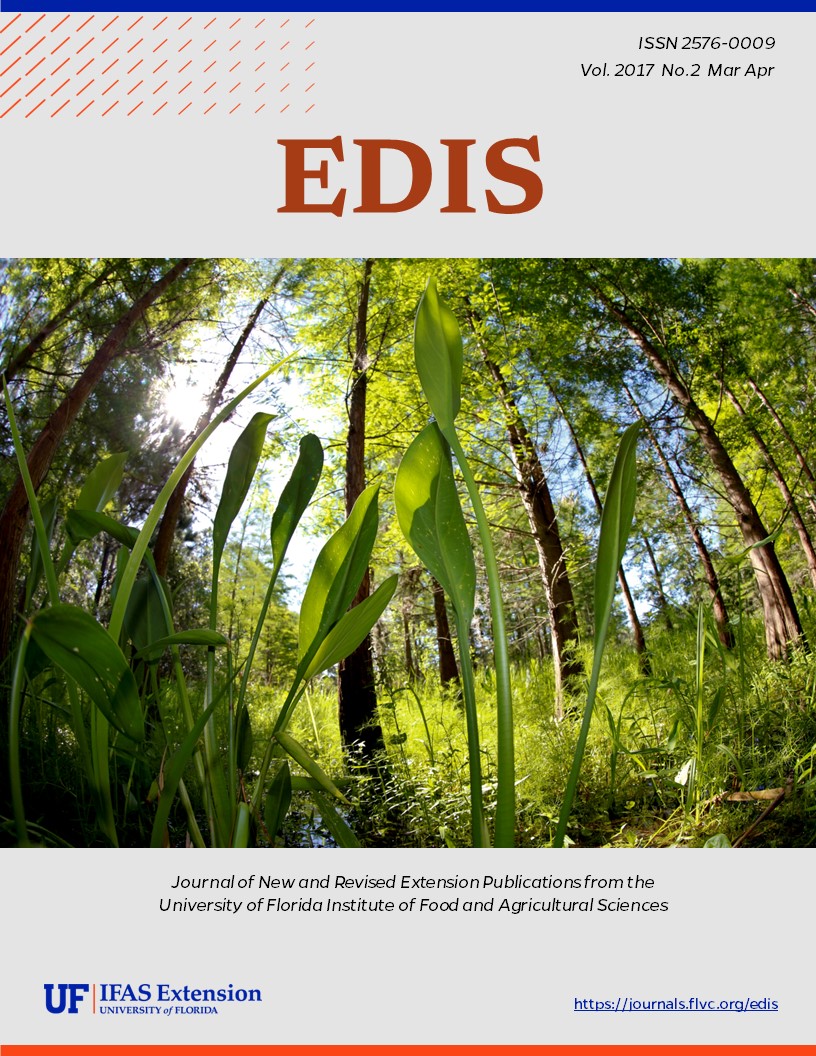Resumen
A diet rich in colorful fruits and vegetables provides a variety of nutrients as well as phytochemicals that can promote health. Lutein and zeaxanthin are two non-provitamin A carotenoids that may be protective against AMD, the leading cause of permanent central vision loss in older adults. This 3-page fact sheet provides an overview of carotenoids, AMD, lutein, zeaxanthin, risk factors for AMD, and good sources of lutein and zeaxanthin. Written by Linda B. Bobroff, and published by the UF Department of Family, Youth and Community Sciences, revised October 2016.
Citas
Age-Related Eye Disease Study 2 (AREDS2) Research Group. (2014). Lutein + zeaxanthin and omega-3 fatty acids for age-related macular degeneration: The age-related eye disease study 2 (AREDS2) randomized clinical trial. JAMA309(29): 2005-2015. http://jama.jamanetwork.com/article.aspx?articleid=1684847 https://doi.org/10.1001/jama.2013.4997
Centers for Disease Control and Prevention. (2013). Vision Health Initiative. Common Eye Disorders. Accessed on October 24, 2016. http://www.cdc.gov/visionhealth/basics/ced/index.html
DGAC. (2015). Report of the Dietary Guidelines Advisory Committee (DGAC) on the Dietary Guidelines for Americans, 2015. Washington, D.C. Accessed on October 24, 2016. https://health.gov/dietaryguidelines/2015-scientific-report/
Evans, J. R., & Lawrenson, J. G. (2012). Antioxidant vitamin and mineral supplements for preventing age-related macular degeneration. Cochrane Database Syst. Rev, (6). DOI: 10.1002/14651858.CD000253.pub3 https://doi.org/10.1002/14651858.CD000253.pub3
Liu, R. H. (2003). Health benefits of fruit and vegetables are from additive and synergistic combinations of phytochemi-cals. Am. J. Clin. Nutr. 78(3): 517S-520S. https://doi.org/10.1093/ajcn/78.3.517S
National Institutes of Health, Office of Dietary Supple-ments. (2013). Vitamin A: Fact sheet for health profes-sionals. Accessed on June 1, 2015. http://ods.od.nih.gov/factsheets/VitaminA-HealthProfessional/
US Department of Agriculture, Agricultural Research Service, Nutrient Data Laboratory. (2016). USDA National Nutrient Database for Standard Reference, Release 28. Accessed on August 19, 2016. https://www.ars.usda.gov/northeast-area/beltsville-md/beltsville-human-nutrition-research-center/nutrient-data-laboratory/docs/usda-national-nutrient-database-for-standard-reference/
Centers for Disease Control and Prevention. (2013). Vision Health Initiative. Common Eye Disorders. Accessed on October 24, 2016. http://www.cdc.gov/visionhealth/basics/ced/index.html
DGAC. (2015). Report of the Dietary Guidelines Advisory Committee (DGAC) on the Dietary Guidelines for Americans, 2015. Washington, D.C. Accessed on October 24, 2016. https://health.gov/dietaryguidelines/2015-scientific-report/
Evans, J. R., & Lawrenson, J. G. (2012). Antioxidant vitamin and mineral supplements for preventing age-related macular degeneration. Cochrane Database Syst. Rev, (6). DOI: 10.1002/14651858.CD000253.pub3 https://doi.org/10.1002/14651858.CD000253.pub3
Liu, R. H. (2003). Health benefits of fruit and vegetables are from additive and synergistic combinations of phytochemi-cals. Am. J. Clin. Nutr. 78(3): 517S-520S. https://doi.org/10.1093/ajcn/78.3.517S
National Institutes of Health, Office of Dietary Supple-ments. (2013). Vitamin A: Fact sheet for health profes-sionals. Accessed on June 1, 2015. http://ods.od.nih.gov/factsheets/VitaminA-HealthProfessional/
US Department of Agriculture, Agricultural Research Service, Nutrient Data Laboratory. (2016). USDA National Nutrient Database for Standard Reference, Release 28. Accessed on August 19, 2016. https://www.ars.usda.gov/northeast-area/beltsville-md/beltsville-human-nutrition-research-center/nutrient-data-laboratory/docs/usda-national-nutrient-database-for-standard-reference/

